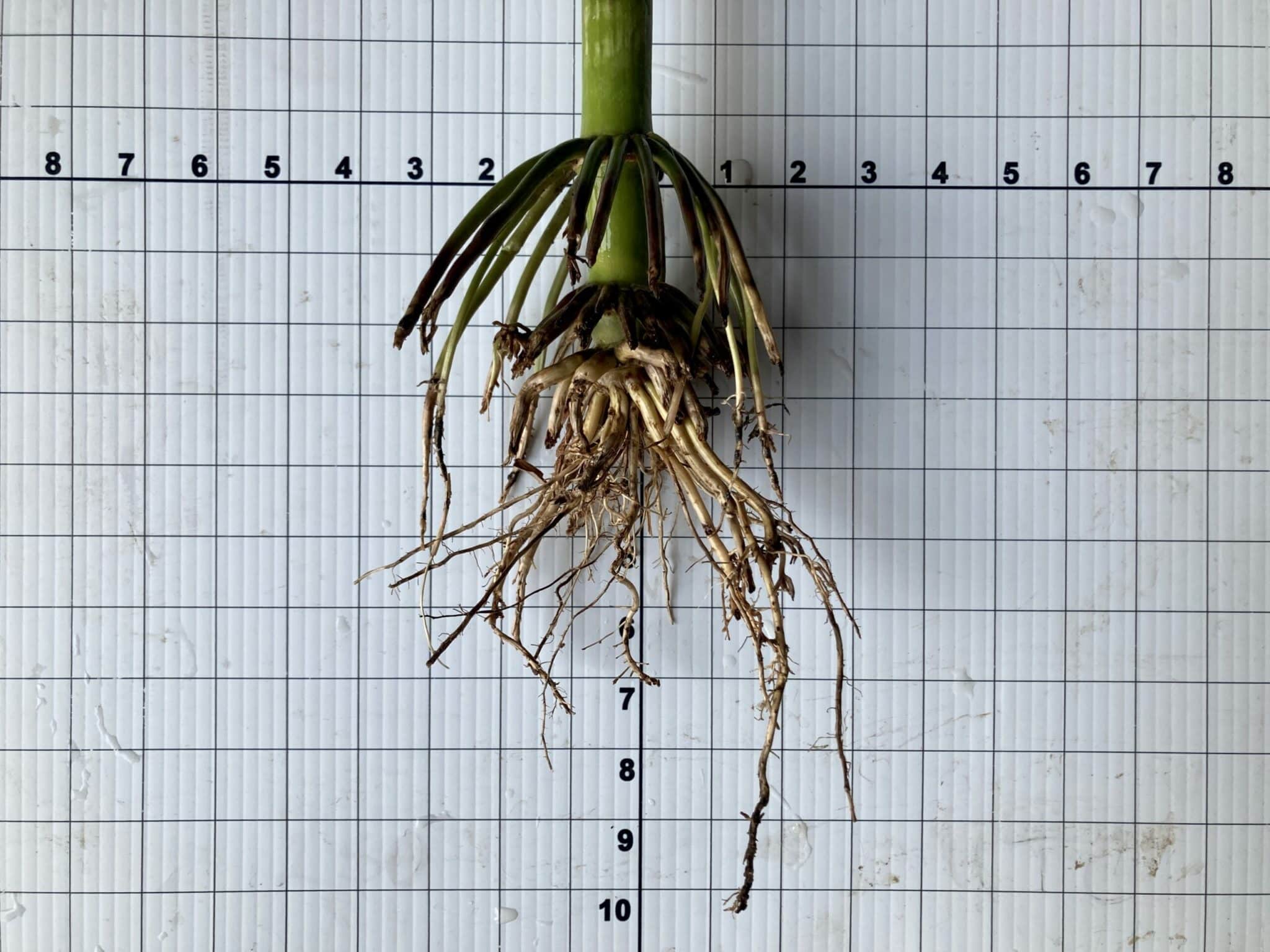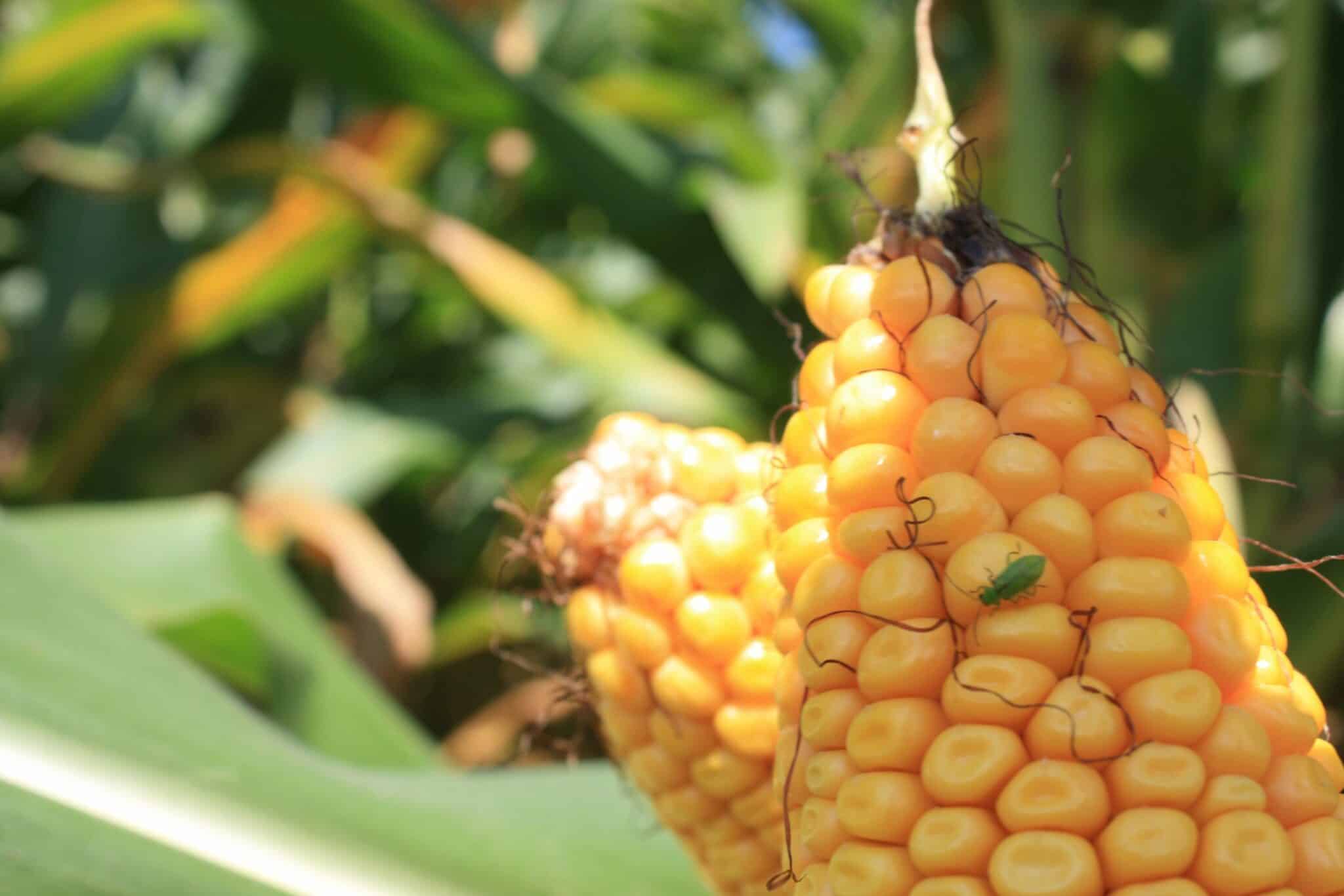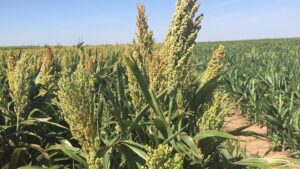Eradicating this pest can be tough, but there are practices corn producers can use to help manage yield loss caused by this insect.
Corn rootworm (CRW) isn’t called the billion-dollar pest for nothing. Unfortunately, it has earned this unsettling moniker due to it being a devastating insect pest that costs U.S. growers over a billion dollars in crop losses and management practices annually.
Essentially, its larvae damages corn root systems by chewing and feeding on the young roots, which interferes with the plants ability to efficiently absorb water and nutrients.
“If feeding is severe, plants may lodge, making harvest difficult,” explains Tim O’Brien, traits manager at Syngenta in Downers Grove, Illinois.
“Once the larvae mature, they emerge from the soil as adult beetles to mate and lay eggs that will overwinter and hatch the following season. The adult beetles can also clip ear silks and interfere with pollination. Populations of corn rootworm vary by field based on past crop history, soil type and environmental conditions.”
Grain markets can be a contributing factor as stronger corn prices sometimes increases corn-on-corn acres. Mild winters with insulating snow cover and lower moisture at larval hatch can support an increase in survival leading to more larvae feeding on corn roots.
“In general, environmental conditions in some areas of the Corn Belt supported increased CRW larval feeding in 2020 and 2021, with environmental conditions in 2022 leading to less larvae and feeding,” explains O’Brien. “But — from Colorado across the country to New York state — the crop history and past management are normally the leading factors projecting the CRW populations of a field.”
Safeer Hassan, Corn Systems Manager at Bayer Crop Science in Greater St. Louis, Missouri, agrees and adds that root feeding damage may also lead to lodging, which can cause difficulties at harvest. CRW is also capable of causing yield losses of up to 45%.
“CRW pressure has also been on the rise for the past few years and there are several factors responsible for this increased pressure. These included growing corn on the same field for multiple years without rotation to a non-CRW host crop such as soybeans; favorable environmental conditions for larval survival; and potential development of resistance to B.t. traits.”
Eradication Measures
When it comes eradicating this pest, Nick Tinsley, a technical field representative at BASF who covers the Eastern Corn Belt, says there is little hope of eradicating corn rootworm altogether. However, there are a number of practices that corn producers can use to help manage yield loss caused by this insect. Because the larvae feed nearly exclusively on corn roots, crop rotation can be a great option for many growers.
“It should be noted, however, that many areas of the Corn Belt have populations of corn rootworm that are able to counter this practice through various adaptations,” he explains.
“Many seed- or soil-applied insecticides are labeled for corn rootworm and can be very effective for reducing yield loss. Finally, transgenic hybrids continue to offer significant value in terms of protecting yield from corn rootworm. No matter the technique used, growers should take time to evaluate the effectiveness of their management program by digging and evaluating roots in mid-July.”
Corn rootworm has a number of characteristics that make it a problem. Probably the most significant is its ability to develop resistance to control tactics.
Nick Seiter, a field crop entomologist with the University of Illinois, explains that populations of both western and northern corn rootworm have developed resistance to diverse tactics including insecticides, Bt hybrids, and crop rotation.
“In recent years, increasing levels of resistance to Bt traits in particular has led to higher populations and greater damage in some areas, particularly those areas where a lot of corn is grown following corn.”
As for eradication measures, Seiter says crop rotation is one of the best tools growers have.
“While there are rotation-resistant populations of both species, damage to first-year corn has been minimal in recent years (at least in Illinois), and it’s no coincidence that areas with less rotation have higher rootworm populations. In east central Illinois (formerly a hot spot for rotation-resistant western corn rootworm), we have had minimal problems with rootworm in recent years.”
O’Brien agrees and adds that crop rotation to a non-host crop is still the single most effective way to control corn rootworm. This is because the adult beetles lay their eggs in corn fields anticipating that when they hatch next season, there will be corn roots there for larvae to feed on.

“If in the following season a non-host crop like soybeans is planted, as the CRW eggs hatch there are no corn roots for larvae to feed on and they starve. There are exceptions in some areas of the Northern and Eastern Corn Belt where CRW has adapted to crop rotation. In the Northern Corn Belt, some eggs of the Northern corn rootworm may have an extended diapause where the eggs remain in the soil for more than one season and hatch in subsequent seasons when corn may be planted again. Then, in areas of the Eastern Corn Belt, a variant of the Western corn rootworm has begun laying eggs in soybean fields, so if corn is planted the following season those eggs hatch and feed on corn roots.”
He adds that in addition to crop rotation, management strategies including seed trait stacks like DuracadeViptera, soil applied insecticides like Force, seed treatments like Avicta Complete Corn 1250, and adult beetle control with Warrior II can be used in a multi-year plan to minimize CRW populations and damage.
“A unique trait product, like DuracadeViptera, provides an ideal foundation for a CRW control plan for several years but different technologies should be used in some years through a multi-year plan to prevent adaptation to a single technology.”
Seiter emphasizes that control decisions need to be made prior to planting. This is because all effective controls—rotation, Bt traits, insecticides—must be applied at planting.
“When the larvae are active in late May to June, sampling roots for larvae can give you an initial idea of how effective controls have been. Digging roots and examining them for damage in mid to late July is a more accurate way to determine how well your controls worked out. Finally, monitoring adults in July to August is the best way to determine your potential for rootworm damage the following year.”
SmartStax Pro and RNAi Technology
While technology can work wonders in many areas of agriculture, when it comes to corn rootworm, Seiter says that no trait or insecticide is bullet-proof.
“However, depending on the area there may still be a good deal of susceptibility to at least Cry34/35Ab1. Soil insecticides targeting corn rootworm remain pretty effective, though they allow a higher adult population to survive than an effective Bt trait would. New RNAi trait packages have been or will be released over the next few years. These will provide a new mode of action for rootworm control but are still paired with Bt proteins that in many cases are already compromised by resistance.”
This year, Bayer launched SmartStax PRO with RNAi Technology, the next generation of corn rootworm protection. It is the industry’s first product offering with three modes of action for corn rootworm control, including a novel RNAi based mode of action.
“This product will provide growers yet another tool to help control tough corn rootworm pests,” says Hassan. “In addition to corn rootworm, SmartStax PRO will offer growers protection against European corn borer, southwestern corn borer, fall armyworm, black cutworm, and corn earworm, as well as tolerance to glyphosate and glufosinate herbicides.
Hassan says it’s best for growers to take a proactive approach when managing corn rootworm.
“Growers need to plan ahead and make their management decisions before the season starts as there are no effective rescue treatments for corn rootworm. If you wait until you see damage, it is too late.”
Tinsley agrees and adds, “There are no post-planting ‚Äòrescue’ treatments available for corn rootworm, so management decisions need to be made in advance of planting a corn crop. This means that it is especially important for growers to scout for corn rootworm during the growing season so that they can make an informed decision about how they will manage the following year’s corn crop.”
Want to read more about breeding efforts? Visit:
Multi-Stack Soybean Traits Look to an Ambitious Future
The Ins and Outs of Trait Stacking Compatibility
Sorghum’s Looking to Bolster Food Security
Breeders Rely on Crop’s Wild Relatives for New Varieties¬†— But They Could be in…










